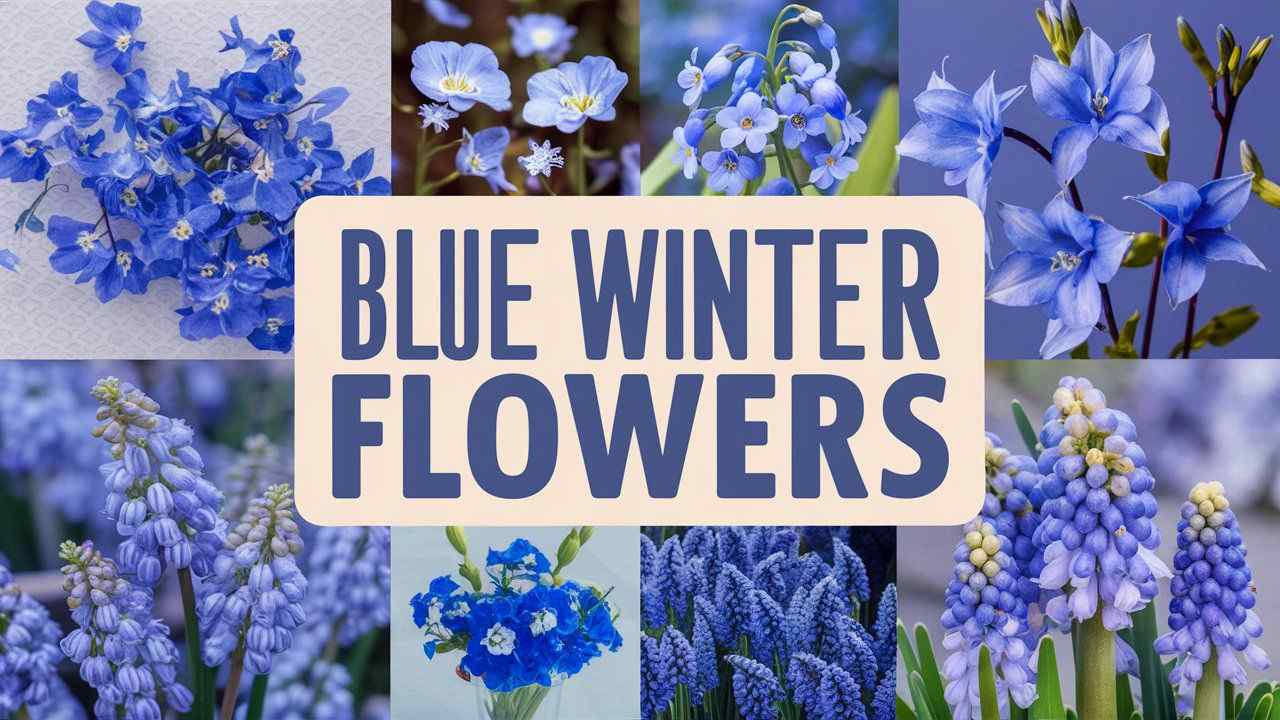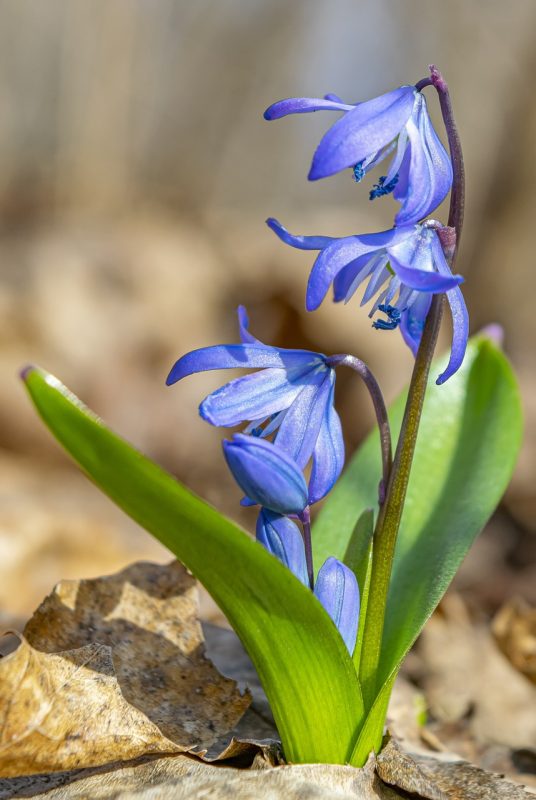As the cold winter months approach, many might think that the color palette of nature fades to dull browns and grays. However, nature surprises us with a remarkable array of blue winter flowers that can add a vibrant splash of color to the winter landscape. In this article, we introduce you to stunning blue winter flowers showcasing their unique characteristics, growth habits, and care requirements.
Glory of the Snow
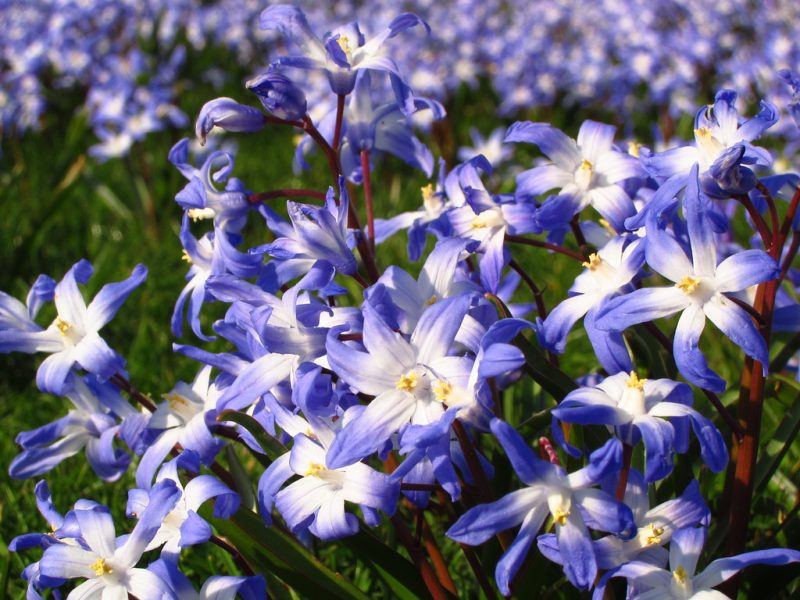
Glory of the Snow (Chionodoxa forbesii) is a delightful bulbous perennial that emerges early in the season, often pushing through the last remnants of snow in late winter. This hardy flower is celebrated for its breathtaking blue petals adorned with a white central star, creating a striking contrast against the snowy backdrop. Native to the woodlands of the Eastern Mediterranean, these flowers are adept at thriving in both heavy shade and dappled sunlight.
They typically bloom from March to April, standing at about 4 to 6 inches tall, which makes them perfect for planting in rock gardens, borders, or even in lawns where they can naturalize over time. Glory of the Snow is particularly appealing due to its ability to naturalize effectively, increasing in number year after year if left undisturbed. When planted in groups, these cheerful flowers create a dazzling display that heralds the arrival of spring and captures the hearts of garden enthusiasts.
These flowers prefer well-drained soil and will thrive best in a mixture that contains some sandy or gritty components. After bloom, allowing the foliage to die back entirely is essential, as this allows the plant to gather energy for the next year’s flowering.
Bluebells
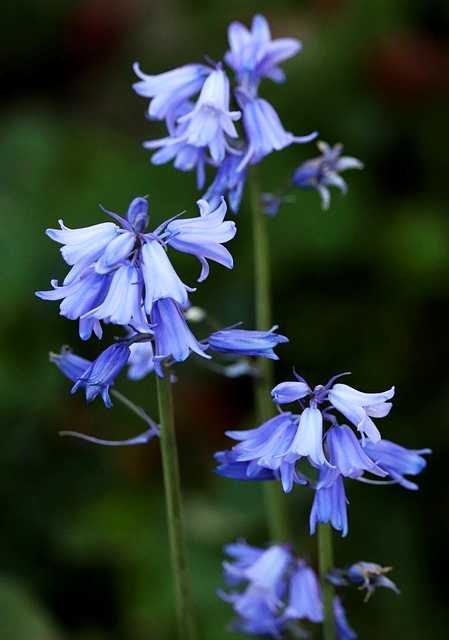
Bluebells (Hyacinthoides non-scripta) are a quintessential spring flower that begins its life cycle in late winter. While traditionally associated with spring, their early emergence can begin even before the last frost, making them a wonderful sight in wooded and shaded areas as they start to bloom. These enchanting flowers create a mesmerizing blue carpet in woodland settings, casting a magical atmosphere that draws in both visitors and pollinators alike.
The life cycle of bluebells begins with sturdy bulbs that lie dormant beneath the soil through winter. As the soil warms, they push up delicate, nodding blooms that can vary in hue from pale blue to a deeper indigo. Beyond their aesthetic charm, bluebells play an essential role in their ecosystems; they provide nectar for early bees emerging from hibernation.
To cultivate bluebells in your garden, it’s best to plant the bulbs in late summer or early autumn. They thrive in well-drained soil enriched with organic matter and prefer partially shaded locations that mimic their natural woodland habitat. Once established, bluebells can multiply over the years, creating a delightful display that signals the arrival of spring.
Forget-Me-Nots
Forget-Me-Nots (Myosotis spp.) are another delightful winter flower that captivates with their vivid blue hues and delicate, star-like blossoms. Typically blooming in early spring, these charming flowers can sometimes be spotted in late winter, especially in milder climates. Forget-Me-Nots carry a rich symbolism of remembrance, love, and nostalgia, making them a thoughtful addition to any winter garden.
These perennial plants are known for their ability to thrive in a range of soil types, though they prefer moist, well-drained conditions. Forget-Me-Nots can be grown from seeds or young plants and are known for their ability to self-seed, ensuring their presence in the garden year after year. Their bright blooms not only attract bees and butterflies but can also furnish ground cover, helping to suppress weeds during the dormant seasons.
For the best results, plant Forget-Me-Nots in clusters among other winter blooms to create a tapestry of color. They are particularly effective in naturalized areas or borders, where their gentle color can harmonize with surrounding foliage and blossom.
Siberian Squill (Scilla siberica)
The Siberian Squill, or Scilla siberica, is an exquisite choice for gardeners looking to infuse their winter landscape with vibrant blue flowers. Known for their small yet striking star-shaped blossoms, Siberian Squills are hardy bulbs that typically bloom from late March through early April, even peeking through patches of snow with their brilliant color.
These charming little flowers are native to regions of Eastern Europe and are well-suited to colder climates, making them a versatile option for an array of gardens. Their modest height (often reaching only 6 to 8 inches) allows them to be perfect for planting at the front of a border or in rock gardens, where they can be admired up close.
Siberian Squills flourish in well-draining soil enriched with organic matter, and they appreciate full sun to partial shade. Interestingly, they are known for their ability to naturalize, meaning that once planted, they can spread and create beautiful colonies, turning an ordinary winter garden into a tapestry of movement and life.
Grape Hyacinths
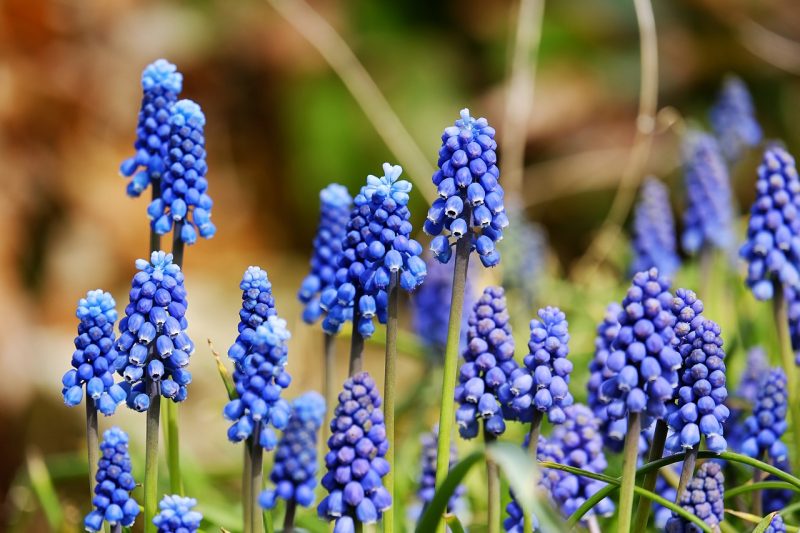
Grape Hyacinths (Muscari spp.) are another charming winter flower that presents a unique and sweetly fragrant addition to any garden. Blooming in early spring or late winter, these lovely blue flowers resemble clusters of tiny grape-like shapes, hence their name. With a variety of species available, you can find Grape Hyacinths that range in color from rich blues to purples and whites.
The small stature of Grape Hyacinths, typically growing to about 6 to 12 inches tall, makes them suitable for mass plantings or mixed borders. They are excellent candidates for naturalizing, as they can spread easily and create beautiful patches over time. Their low-growing habit allows them to serve as ideal companions to taller spring perennials and bulbs, creating layered depth in the garden.
Grape Hyacinths thrive best in well-draining soil with plenty of sun but can tolerate light shade. They are relatively low maintenance and can survive in various conditions, making them an excellent choice for both novice and experienced gardeners. After flowering, similar to Glory of the Snow, it is important to allow the foliage to remain until it withers naturally, as this will ensure the bulbs have sufficient energy to produce blooms in the following years.
Bachelor’s Buttons
Bachelor’s Buttons (Centaurea cyanus), also known as Cornflowers, add a delightful touch of blue to the winter garden with their vibrant, daisy-like flowers. Although typically flowering in late spring or early summer, these hardy annuals can sometimes bloom earlier in milder climates, providing a pop of color when most flowers are still dormant. Their iconic deep blue color and feathery petals make them a favorite among gardeners and pollinators alike.
Traditionally grown in wildflower meadows and agricultural fields, Bachelor’s Buttons can adapt well to various soil types but prefer well-drained, moderately fertile conditions. They are drought-tolerant, making them an excellent choice for gardens in regions that experience dry spells during the winter months. These plants typically reach a height of 2 to 3 feet, making them effective as both cut flowers and border plants.
In addition to their striking visual appeal, Bachelor’s Buttons are easy to grow from seed. They can be sown directly into the ground in the fall or early spring. These flowers not only attract beneficial insects, such as bees and butterflies, but they also work well in mixed flower arrangements, lending a whimsical touch to bouquets.
Blue Winter Flowers for Cold Climates
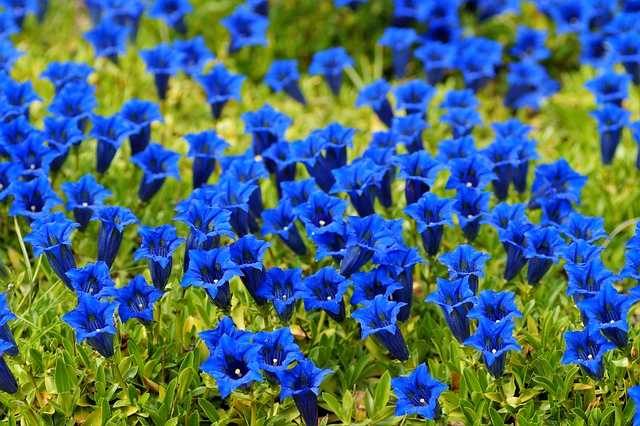
In colder regions where winter temperatures plummet, resilience becomes a key factor in selecting blue winter flowers. Fortunately, several hardy varieties can withstand harsh conditions while still bringing beauty to the winter landscape.
One standout example is the Siberian Squill (Scilla siberica). As we’ve previously discussed, this flower’s ability to endure freezing temperatures makes it a perfect choice for cold climates. It can bloom even when snow is still on the ground, creating a stunning display of blue. In addition to its cold tolerance, it naturalizes easily, spreading year after year and creating charming carpets of blue throughout your garden.
Another excellent option is the Creeping Bluebell (Campanula poscharskyana). This hardy perennial thrives in chilly conditions and produces profuse clusters of star-shaped, deep blue flowers. It’s particularly well-suited for rock gardens and slopes, where its creeping nature can create an attractive ground cover. Its foliage remains vibrant even in winter, providing added interest.
Lastly, consider Gentian (Gentiana acaulis), a striking alpine flower that produces vivid blue blooms in late spring. Though they may experience a dormant winter period, selecting hardy varieties can bring captivating color during the transitional seasons when snow begins to melt.
Blue Winter Flowers for Mild Climates
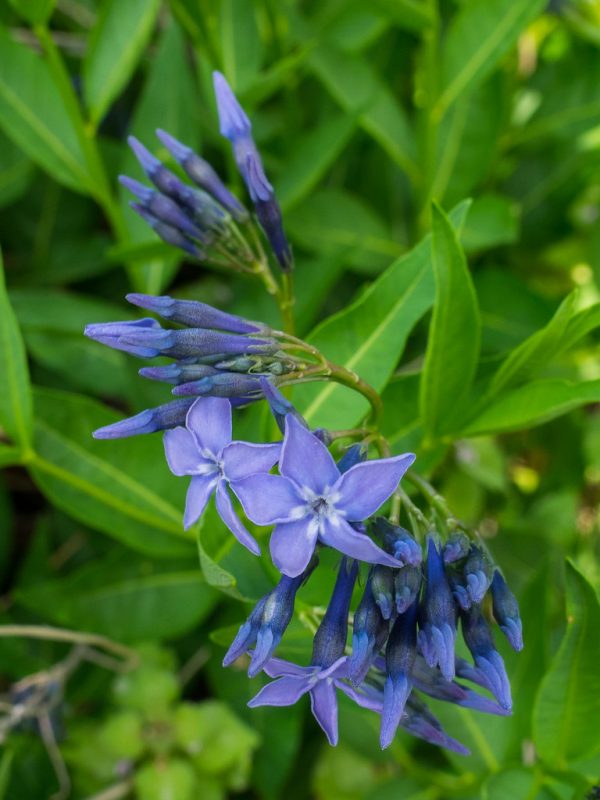
In mild climates, where winters are less severe, a broader range of blue winter flowers can thrive, providing a beautiful early display. One favorite is the Blue Star Flower (Amsonia spp.). Not only do these perennials produce clusters of bright blue flowers in spring, but their foliage also offers stunning autumn color, increasing their appeal as multi-season plants.
Another delightful option is the Virginia Bluebell (Mertensia virginica). This shade-loving perennial is known for its large clusters of bell-shaped flowers that transition from pink buds to a brilliant, sky-blue hue as they mature. They thrive in moist, well-drained soils, making them ideal for garden settings with light shade.
The African Blue Basil (Ocimum kilimandscharicum x basilicum), although primarily a culinary herb, also features striking blue flowers that can bloom in milder winters. Its aromatic leaves and beautiful floral display attract pollinators while providing gardeners with a culinary treasure.
Blue Winter Flowers for Coastal Areas
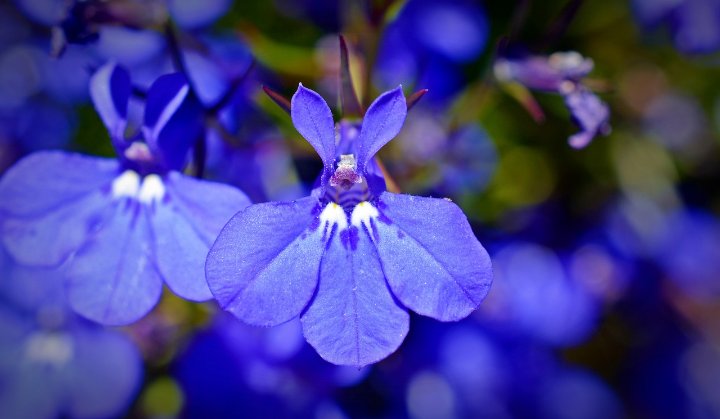
Coastal areas often present unique challenges, such as salty air and sandy soils, but this environment can also be home to an array of blue winter flowers that flourish amid these conditions. The Himalayan Blue Poppy (Meconopsis betonicifolia) is a prime example, known for its breathtaking blue flowers that can brighten coastal gardens. Preferring cool, humid conditions, this poppy is ideal for coastal gardens that experience milder winters and adequate moisture.
For a more resilient choice, the Blue Lobelia (Lobelia erinus) works beautifully in coastal environments. It is an annual that blooms profusely with bright blue flowers throughout the cooler months. This plant can thrive in containers, hanging baskets, or as ground cover, creating a vibrant focal point in any seaside garden.
Lastly, consider planting Sea Lavender (Limonium spp.), which thrives in salty coastal conditions. While it is primarily known for its purple shades, certain cultivars display lovely blue flowers, adding a unique spin to coastal landscapes. Sea Lavender provides excellent drought resistance once established and thrives in sandy soils, making it a perfect fit for coastal gardens.
Blue Winter Flowers in Floral Arrangements
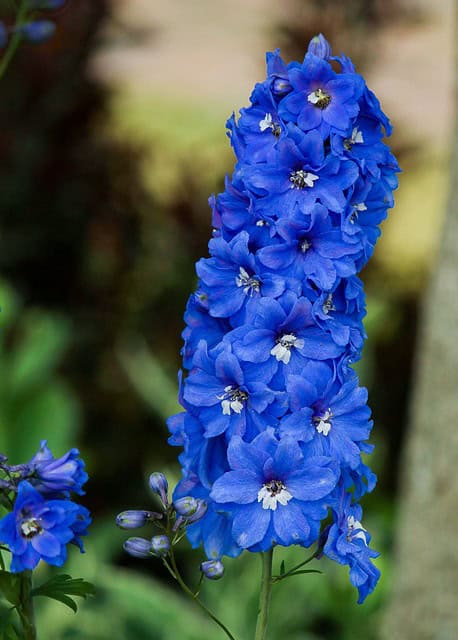
Blue winter flowers can be striking components in floral arrangements, offering a unique contrast to the more common winter blooms in red and white. When assembled thoughtfully, these flowers can create stunning displays that evoke feelings of serenity and tranquility.
Forget-Me-Nots, with their delicate, tiny blossoms, can add a soft, whimsical touch to floral arrangements. Their subtle blue hue makes them ideal for complementing other winter blooms such as white roses or even deeper shades like burgundy. Combining these colors creates a visually appealing palette that echoes the winter landscape while maintaining a warm, inviting atmosphere.
Grape Hyacinths can also be a delightful addition. Their cluster formation and rich blue shades work wonders when mixed with seasonal greenery, such as pine or cedar. This combination not only captures the essence of winter but also brings texture and depth to the arrangement. The sweet fragrance released by the Grape Hyacinths can add an aromatic touch, infusing the space with a fresh feeling reminiscent of spring, making them a unique bridge between the two seasons.
For a more dramatic effect, consider incorporating Delphiniums, if available during the cooler months. Their tall, elegant spires can add height and structure to arrangements, while their intense blue shades create a bold statement. Pairing Delphiniums with white or silver accents—like anemones or dusted evergreen branches—produces a stylish, contemporary look that resonates with winter festivities.
Blue Winter Flowers for Wreaths
Wreath-making is a time-honored tradition that allows for creative expression, especially during winter celebrations. Blue winter flowers can elevate the humble wreath, transforming it into a vibrant work of art. Incorporating these flowers into your wreath not only adds color but also imparts a personal touch to your décor.
A classic choice for incorporating blue flowers into wreaths is Himalayan Blue Poppy. While these blooms may not dry well for long-lasting arrangements, using them fresh in a wreath can create an eye-catching centerpiece for your door during festive occasions. Pair them with evergreens like pine or spruce to create a striking contrast, and add elements such as pine cones or ribbons for additional texture.
For a more prolonged and manageable wreath, Siberian Squill can be used effectively as a dried component. Harvest these flowers when they are fully bloomed, and allow them to dry thoroughly. Once dried, they can be woven among evergreen foliage or incorporated into a mixed composition, forming a beautiful and sustainable wreath that maintains its color throughout the winter.
Additionally, the sweet, delicate blooms of Blue Lobelia can be harvested and dried to create a lovely winter wreath. Their vibrant blue color harmonizes beautifully with winter greens and can be enhanced further with silver accents, such as metallic sprigs or twinkling fairy lights. This not only creates an appealing visual contrast but also evokes winter’s icy beauty.


